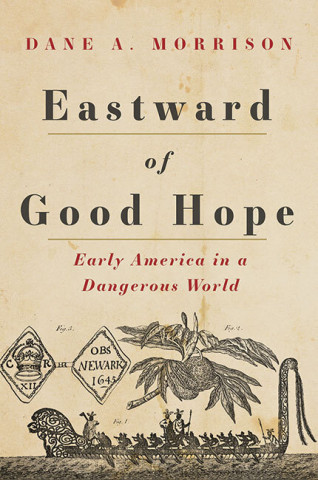
Reviews
...[A] fascinating study of the US's emerging self-identity during the Early Republic combines global history with an analysis of print culture.
Dane Morrison shows how people in the early United States used images of the Orient to situate themselves in the world along a timeline of supposed development from savagery to civilization. The writing is fluent, the material absorbing, and the subject engaging.
Chronicling the fears and anxieties that early Americans imported from overseas—of cannibals, captivity, heretics, and much worse—this elegantly written and convincingly argued book provides a powerful corrective to more triumphalist historical narratives. Morrison's signal contribution is to help us understand the crucial role played by the maritime community in the articulation of an incipient US national identity.
Eastward of Good Hope describes the construction of the narrative of Otherness as American sailors ventured into the Ottoman, China, and Indian trades, and from there to the South Seas. We still live with the categories and impulses shaped by this post-revolutionary construction. This is an essential book for American cultural historians.
In this imaginative and provocative look at American expansion across the seas, Dane Morrison shows the way the wider world appeared to generations of sailors, traders, missionaries, and diplomats who tried but failed to understand the world they found.
Eastward of Good Hope introduces a new dimension to our understanding of the early United States and its place in the world—a world that Americans understood to be filled with danger as much as it was filled with promise and temptation.
Attending to historical archives, memoirs, newspapers, and material culture, Dane Morrison tells a new history of the emergence of the early republic within the global context of the Ottoman Empire, China, India, and mariners' views of the voyages around the Cape of Good Hope to the Pacific Northwest.
When did Americans learn to fear the world beyond their shores, and where and how did they decide that the proper response was force? The answers, as Dane Morrison shows in this elegant, deeply researched book, stretch from colonial Boston to China, India, and the Pacific, where the new republic's merchants and adventurers sailed in growing numbers after the American Revolution. The result is an engaging contribution to the scholarly literature on America and the world.
Book Details
Preface
Acknowledgments
Chapter 1. Coffeehouse Chatter
Chapter 2. Unholy Lands
Chapter 3. "Unfeeling Mandarins" in Canton and Macau
Chapter 4. Hindoos and Fakirs in India
Chapter 5. Cannibal Isles
Chapter 6
Preface
Acknowledgments
Chapter 1. Coffeehouse Chatter
Chapter 2. Unholy Lands
Chapter 3. "Unfeeling Mandarins" in Canton and Macau
Chapter 4. Hindoos and Fakirs in India
Chapter 5. Cannibal Isles
Chapter 6. Echoes
Notes
Index






